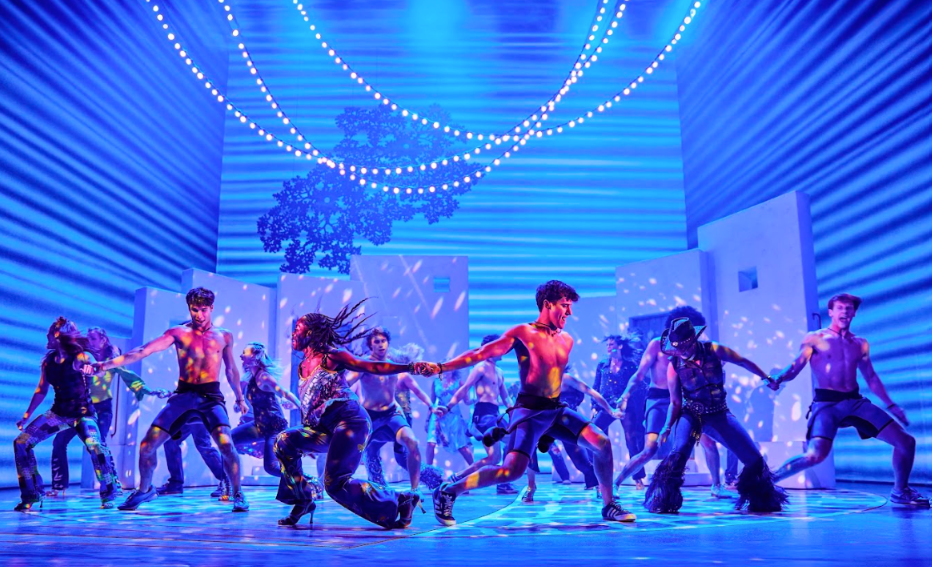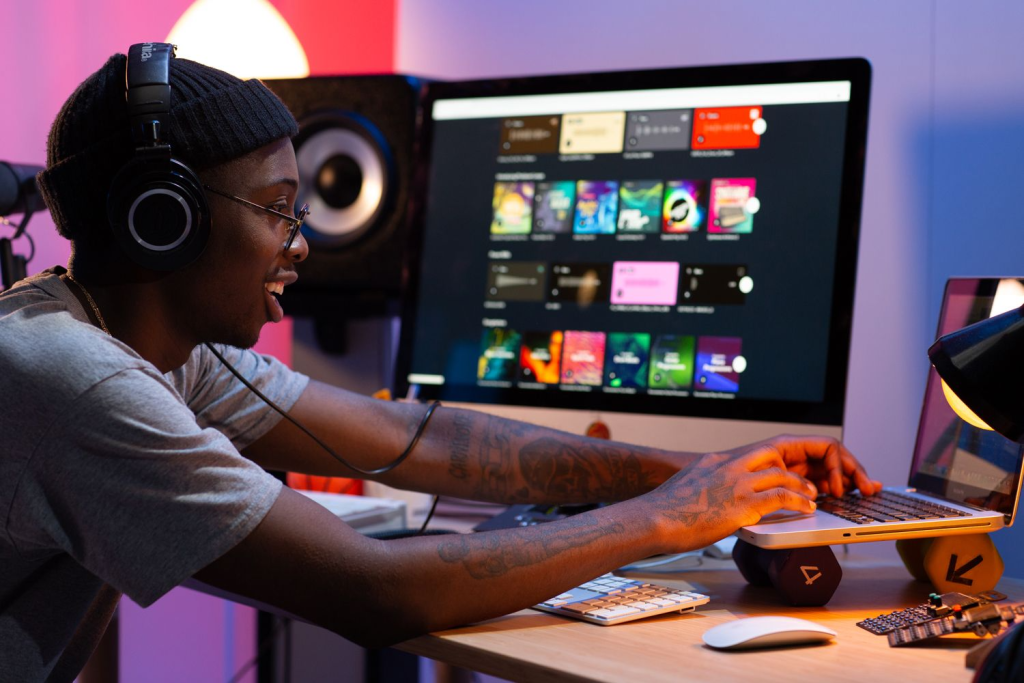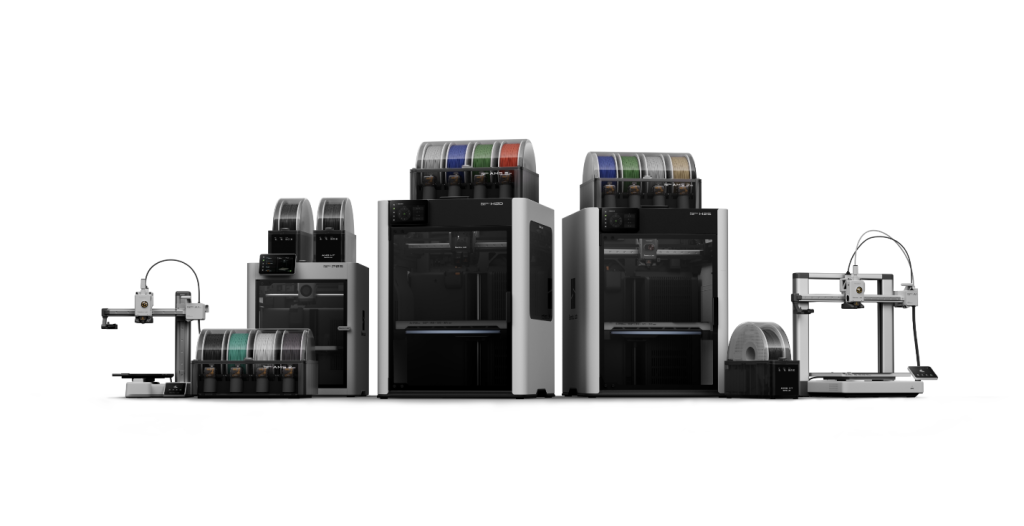Why do some theatre songs echo far beyond the auditorium, finding new life through headphones, playlists and social media posts? A new study by London Theatre Direct analysed over 2,000 musical theatre songs on Spotify to identify the traits that make certain tracks live far beyond the stage.
Drawing on Spotify’s audio features and streaming numbers, the research pinpoints what makes a musical theatre track replayable, memorable and emotionally charged. And it turns out the average show tune has a lot more structure than you might think, but the real stars are the ones that break from the script.
The Blueprint for the Musical Song, Mapped by Data
To establish a benchmark, London Theatre Direct collected 2,136 songs and analysed them across 10 audio features used by Spotify: danceability, energy, valence (mood), speechiness, liveness, acousticness, tempo, key, mode and time signature. Every track was scored on a scale of 0 to 100.
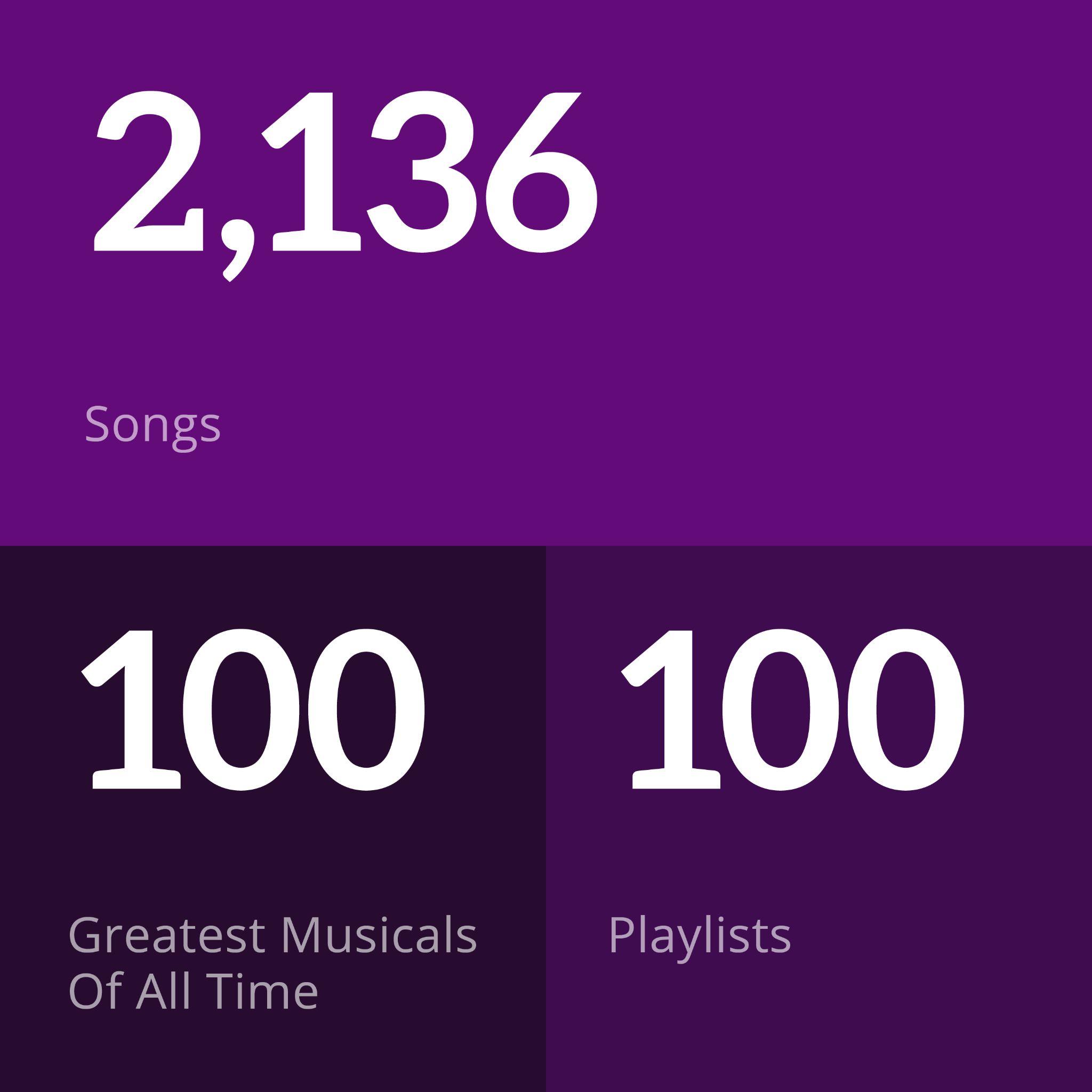
The typical song sat in the middle of the road. Moderate danceability (51), fairly low energy (39), emotionally mixed mood (valence 43), high acousticness (64), and very little spoken word (speechiness 13). These values suggest a style geared for performance rather than radio. Songs that prioritise vocal clarity and storytelling over tempo or commercial pop polish.
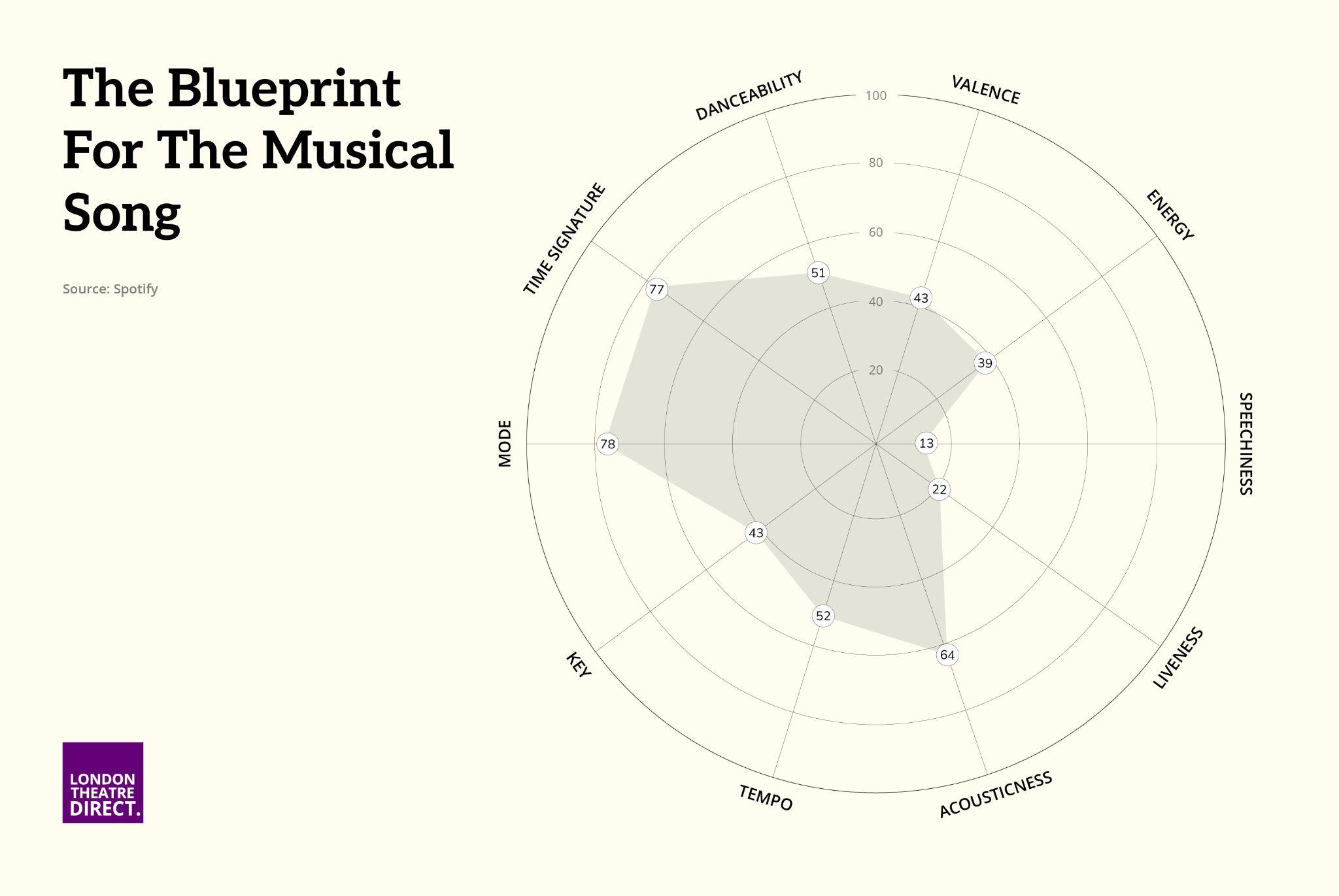
It’s music written to fit a scene, to support character development, to allow for movement on stage, and to create emotional tension. The song doesn’t need to dominate, it needs to carry the show forward.
What Happens When Songs Leave the Stage
But the moment you look at the 20 most streamed theatre songs on Spotify, that balance shifts.
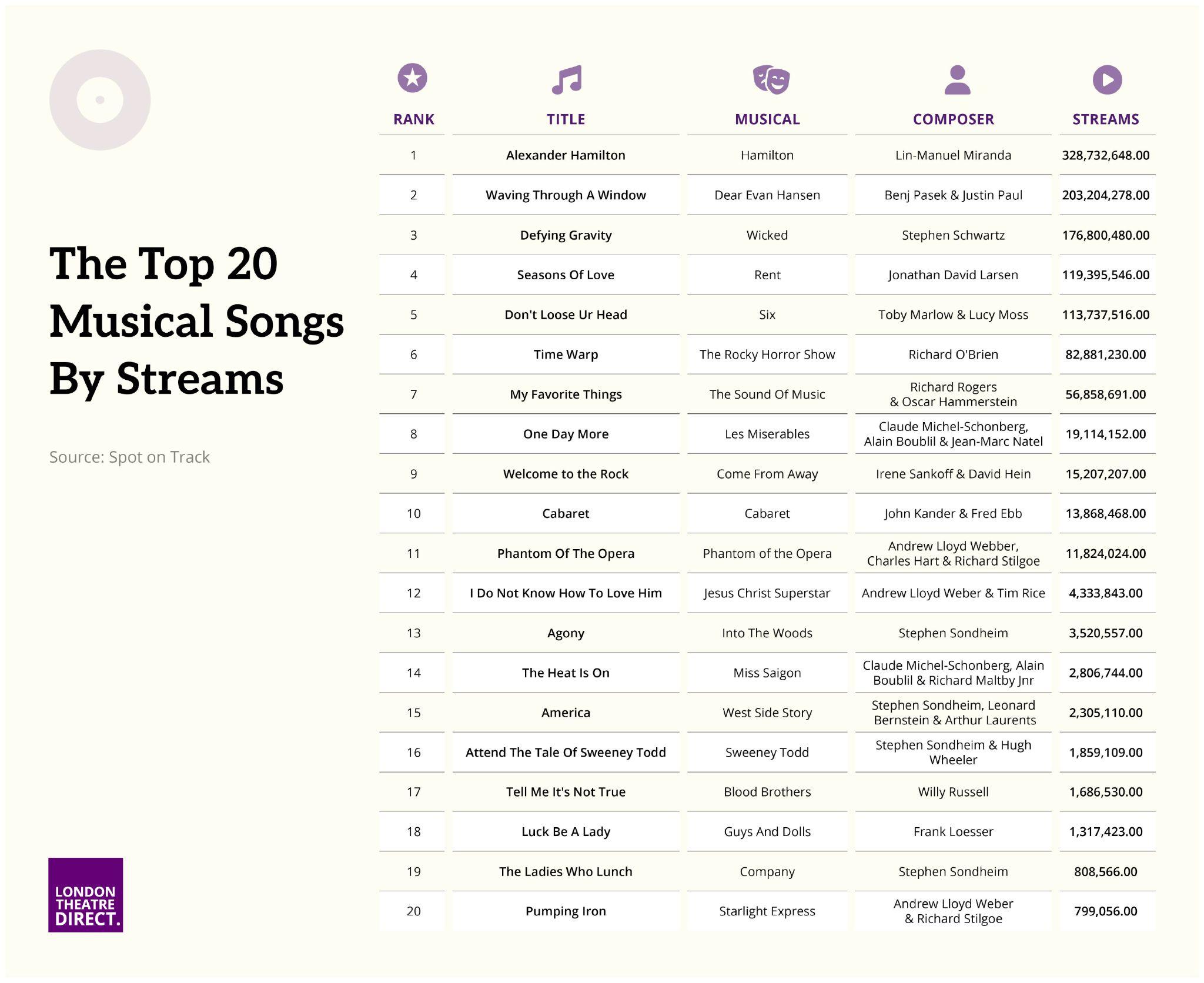
Take “Alexander Hamilton”, the opening number from Lin-Manuel Miranda’s Pulitzer-winning musical. Its speechiness score shoots up to 30, rare for a genre known for sung-through performances. Its structure pulls from hip hop and spoken word. Or “Don’t Lose Ur Head” from Six, which tops the scale for danceability and humour with bright, pop-infused energy.
The most streamed tracks consistently do a few things differently. They often land at turning points in the narrative. They’re packed with hooks. They feel self-contained enough to live outside the theatre. And they blend genres, gospel, rap, pop, rock, in ways that draw in casual listeners who might never buy a ticket.
Not Just Theatre Fans Pressing Play
This crossover appeal isn’t accidental. Theatrical composers are no longer writing only for a seated audience. The popularity of cast recordings, viral moments on social media and the sheer power of Spotify algorithms have made the original cast album a launchpad.
That means musical numbers are now being measured not only by applause, but also by repeat listens. Streaming gives a different kind of feedback loop, it tells you what people go back to. Not the final note of the ensemble, but the line someone sings alone on a walk home.
It’s why songs like “Waving Through a Window” from Dear Evan Hansen top playlists. Its accessibility, clean tempo and emotional directness speak to younger listeners who find themselves in the lyrics. It’s why “Time Warp” from The Rocky Horror Show refuses to fade away, decades later, it’s interactive, rhythm-driven, and thrives on audience participation.
A Formula Hidden in the Numbers
There’s no magic trick, but the data does point to a pattern. The songs that stream best don’t try to tick every box. They exaggerate one or two key elements.
High energy. Singable refrains. Emotional impact that builds to a payoff. A blend of familiarity with something surprising. And above all, they deliver a strong mood, melancholy, joy, anger, elation, and stay there just long enough to feel cathartic.
You see this with “Defying Gravity”, which resists upbeat structure and instead builds theatrical intensity. Or with “Seasons of Love”, which keeps things simple, a repeated motif, universal theme, and warm vocal arrangement.
The Story Still Comes First
Despite all the numbers, emotion drives the biggest songs. They tap into personal stakes. “One Day More” doesn’t go viral because of its BPM. It works because it channels anticipation and anxiety. It’s a shared breath before chaos. The score supports the weight of that moment.
Musical theatre doesn’t live in isolation. It borrows from cultural moments, reinvents familiar genres, and constantly adapts to changing tastes. You can hear it in the hip-hop inflection of Hamilton, in the sarcasm of “The Ladies Who Lunch” from Company, or in the arena-rock edge of Starlight Express.
What binds all of them is that they make you feel something, fast. And they leave enough space for that feeling to settle.
Behind the Curtain: The Songwriters Who Keep Reappearing
Among the most streamed are familiar names. Andrew Lloyd Webber and Stephen Sondheim appear again and again. Between them, they shaped entire decades of musical theatre. From the intensity of Jesus Christ Superstar to the bitter wit of Into the Woods, their songs aren’t just technically strong, they’re emotionally specific.
Sondheim famously wrote from character first. Lloyd Webber built drama into every phrase. Both understood how to use melody to deliver emotion, not just sound. And it shows. They still dominate the playlists.
Some Songs Just Hit Different
When listeners come back to the same song, over and over, it’s rarely because the notes are perfect. It’s because something about the track resonates with real life. That could be Elphaba’s declaration of freedom, or a quiet plea like “Tell Me It’s Not True”.
The data confirms what theatre fans already feel. The best songs are never filler. They hit a nerve. And more often than not, the ones that stream best are the ones that could stand alone as their own story.
So whether you’re humming “Cabaret” on the way to work or putting “America” from West Side Story on your running playlist, remember, there’s probably a reason that track stuck with you. And chances are, someone else hit play on it again this morning too.


